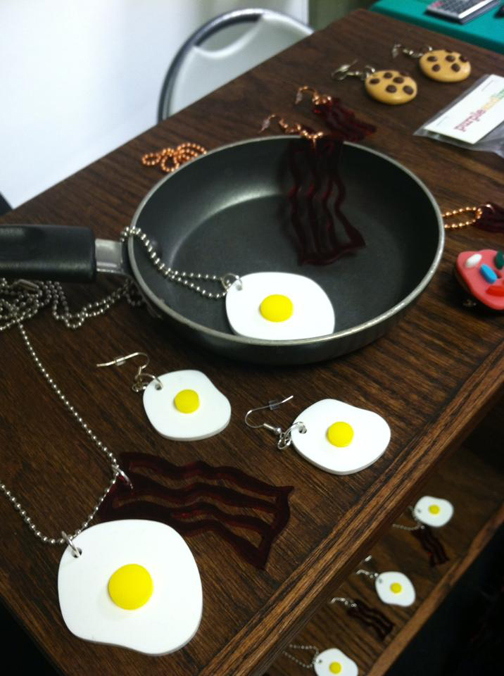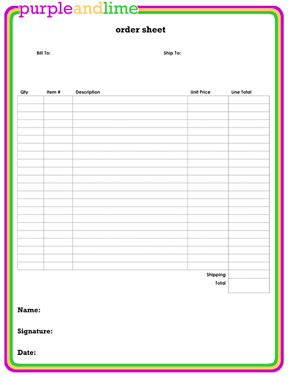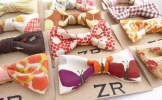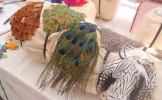 I recently was an exhibitor at my first wholesale show, and learned that preparing inventory and paperwork for store buyers is drastically different than packing for a craft fair where you're selling to the public.
I recently was an exhibitor at my first wholesale show, and learned that preparing inventory and paperwork for store buyers is drastically different than packing for a craft fair where you're selling to the public.
Unlike a big craft show, you may only need one of each item (or “sample”). But there are a few new elements, that don't apply to craft fairs, that you'll need, and it's vital to prepare ahead of time. Here’s my list of essentials to get ready for your first wholesale event!
1. Professional Line Sheets
Attractive catalogs (or “line sheets”) are so important for wholesale selling, though they can often be a challenge to prepare. At the very least they should contain small but clear photos of your products, an item number (if you use them), wholesale prices, MSRP (suggested retail prices), colors, and dimensions. You’ll use your line sheet to show examples and color choices to stores that visit your booth, so arrange products by theme or type to make a quick search easier. (Check out our resource article on creating wholesale line sheets if you've never made one before, or just want a refresher.)
Buyers might not even look at your catalog at the show, but they often take them home to look at later. Offering a packet with your line sheets and order forms may result in orders in the future, so it pays to try to get them in the hands of interested (but slightly hesitant) buyers. The quantity of line sheets and other paperwork you need to print out depends on the show, so I would recommend checking with the organizer for an estimate on buyer attendance.

How To Build an Artist Website
Sign up for our newsletter and get the book How to Build an Artist Website for free!
2. Order Forms with a Receipt Carbon Copy
This is one really important thing that I didn't prepare for my first wholesale show, but wish I had! Many crafters keep a receipt book for craft show sales, but recording orders for a wholesale purchase is totally different. Your order form needs many rows and columns, and may even run onto the next page if they order a large quantity of items. Make your life much easier and print these on a multi-layered paper with a carbon copy- this way you can keep a copy, your customers can take copies with them, and the third page can be sent with the merchandise.
3. Color Charts and Swatches
Offering buyers a variety of colors, metals, and fabrics can lead to more custom orders at the show. Neatly organize these choices on color charts and swatch books (or cards) with clearly labeled numbers or names. Then, buyers can personalize items for their store. This also can prevent you from losing a sale if buyers don’t love the exact fabrics or colors you paired up. For my recent wholesale show, I made a reusable faux fur swatch chart (for my booth), as well as paper copies with fabric and acrylic colors (for buyers to take). Separate each chart or swatch page by material type so it's easy to show to buyers.


Two essentials that you'll need for wholesale shows, but probably haven't done for traditional craft fairs: order forms and color charts.
4. Office Supplies
Definitely bring a small stapler (and staples), paper clips, a note pad, and plenty of pens. With so many business cards exchanging hands during a large show, it helps to stay organized by stapling cards to order forms and other paperwork. If you plan to follow up with a buyer you meet, make notes on your note pad and attach the card so you remember who’s who. It’s really easy to mix up names and faces, plus you may be running on less sleep than normal so your memory isn’t as sharp!
5. Press Packs
Most wholesale shows have a press room and will allow you to leave materials for interested members of the media. Also keep a few at your booth in case any TV shows, writers, bloggers, or other media types stop by. There’s no set formula for making a press pack, but always include a business card, bio, press page, product shots, possibly a freebie (like a button or magnet) and anything else that is noteworthy about your business.
The more organized your catalogs and other printed material, the more professional you will appear to retail shops. Use these tips to help your handmade business maximize sales and impress wholesale buyers!




